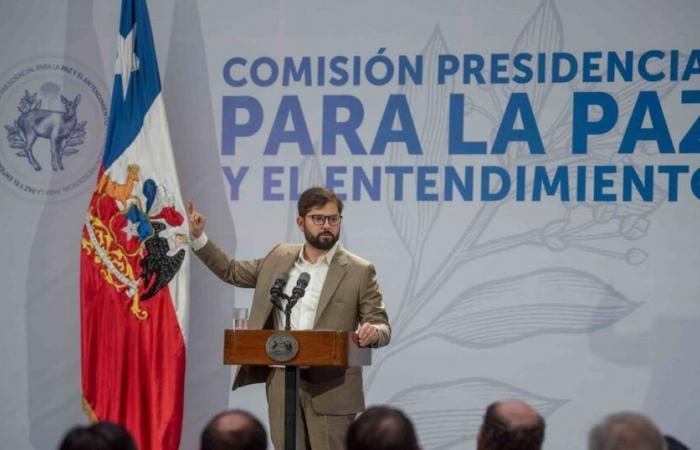Solve what and how would the mechanism for land restitution to indigenous communities It was the discussion that marked the last 15 days of work of the commission for Peace and Understanding, which with the transverse agreement in 2023 of the political parties was intended to seek an exit to the Mapuche territorial conflict.
According to the knowledgeable of the intern, the knots were given when trying to harmonize the positions that went from state control and the participation of farmers, until the historical debt of land for the Mapuche communities.
Thus, the instance – composed of eight commissioners and an executive secretary – had as its goal for this last issue to devise a formula that changed the current restitution process managed by the National Indigenous Development Corporation (CONADI). The reason? The current mechanism allows the delivery of land without restrictions, and without establishing a temporary limit: The legislation establishes that every six years the payroll of the communities registered for a restitution is updated and that they already have their applicability processes, which causes an exponential increase of the possible beneficiaries and – in consequence – of the lands to be claimed. And it is that according to the calculations of the commissioners, the foregoing would cause those communities to grow and, therefore, increase those who want to opt for restitution.
To this is added the conflict between communities and owners, because the current system establishes that For families to get land they must find an owner willing to sell. That, according to understood in the matter, generates confrontations – even violence – when the owner is not willing to carry out the transaction.
All of the above, for example, keeps 1,300 indigenous communities today with an application in process.
For the same reason, the Commission put a new proposal in voting table: Create a repair agency that replaces CONADI and coordinates land restitution.
The proposal restitution system is also completely restructured. For example, for each particular conflict to resolve, communities will have different options to choose from: land delivery; Financing for projects; money instead of hectares, among others.
It also establishes a fixed land fund that will be administered by the agency, of which the communities may choose.
But the point that caused uncertainty, at least for the commissioner Sebastián Naveillán, president of the Malleco Farmers Association, That he rejected the text in its entirety, was that among the new requirements it is established that in the fourth year of operation the new system could be evaluated its operation, taking into account that the lands available by province are sufficient so that the communities can opt for land as a form of repair, and that there is a protection of the rights of the particular owners of land, especially in the voluntariness in the offer of them. This was seen by the commissioner Naveillán as a possibility that the conflict remained alive or, even, to return to zero pages.

“It does not close the process of buying fields in the future. Everyone voted in favor that if sufficient hectares are not reached to meet the demand, the process will be reopened to seek what the communities request,” he says Naveillán a The third.
The ex -commissioner emphasizes that this point was installed during the last sessions of the Commission, leaving without margin the proposal of other mechanisms that would completely sealed the restitution.
For him, the exit that his peers voted becomes a copy of what currently exists: “If you open the process in a few more years, the pressure towards the Earth returns, to its purchase. Finally the problem does not close; I entered with the conviction that you have to close the purchase of fields.”
But as defended by the other seven commissioners who voted in favor of the text, this will be a unique process that will not be repeated.
And although the text had a majority support – but not unanimous, as had initially agreed – the apprehensions during the discussion also focused on the new system establishes that to access land restitution, within that period of 4 years families may not have grown more than 5%. That is, if in principle there were only 40 relatives, to request update of the restitution, up to a total of 42 relatives will be accepted.

That is why for whom they were co -chair of the commission, the former minister Alfredo MorenoThe proposal is limited to restitution times, compared to the current system, in addition to its beneficiaries.
“The law does not determine the beneficiaries, while the current proposal seeks to determine them clearly in order to solve the problem much faster in order to avoid frustration and the difficulties they generate between the State and the Mapuche for this feeling that it does not meet them,” he says to this medium.
It also argues that this seeks to limit the expense of the State and, therefore, limit pressure on the land and, above all, limit the conflict between owners and Mapuche communities. ”






